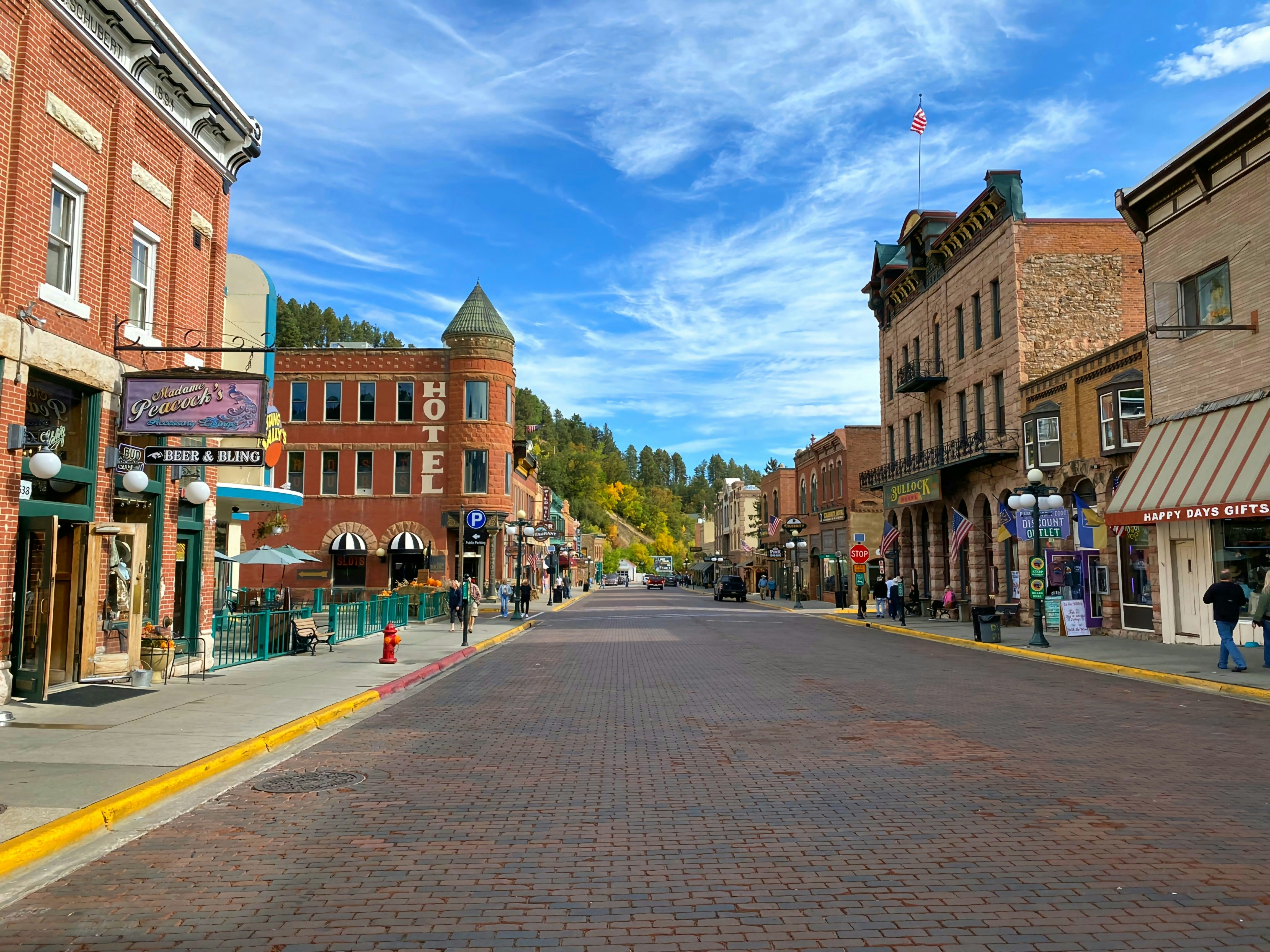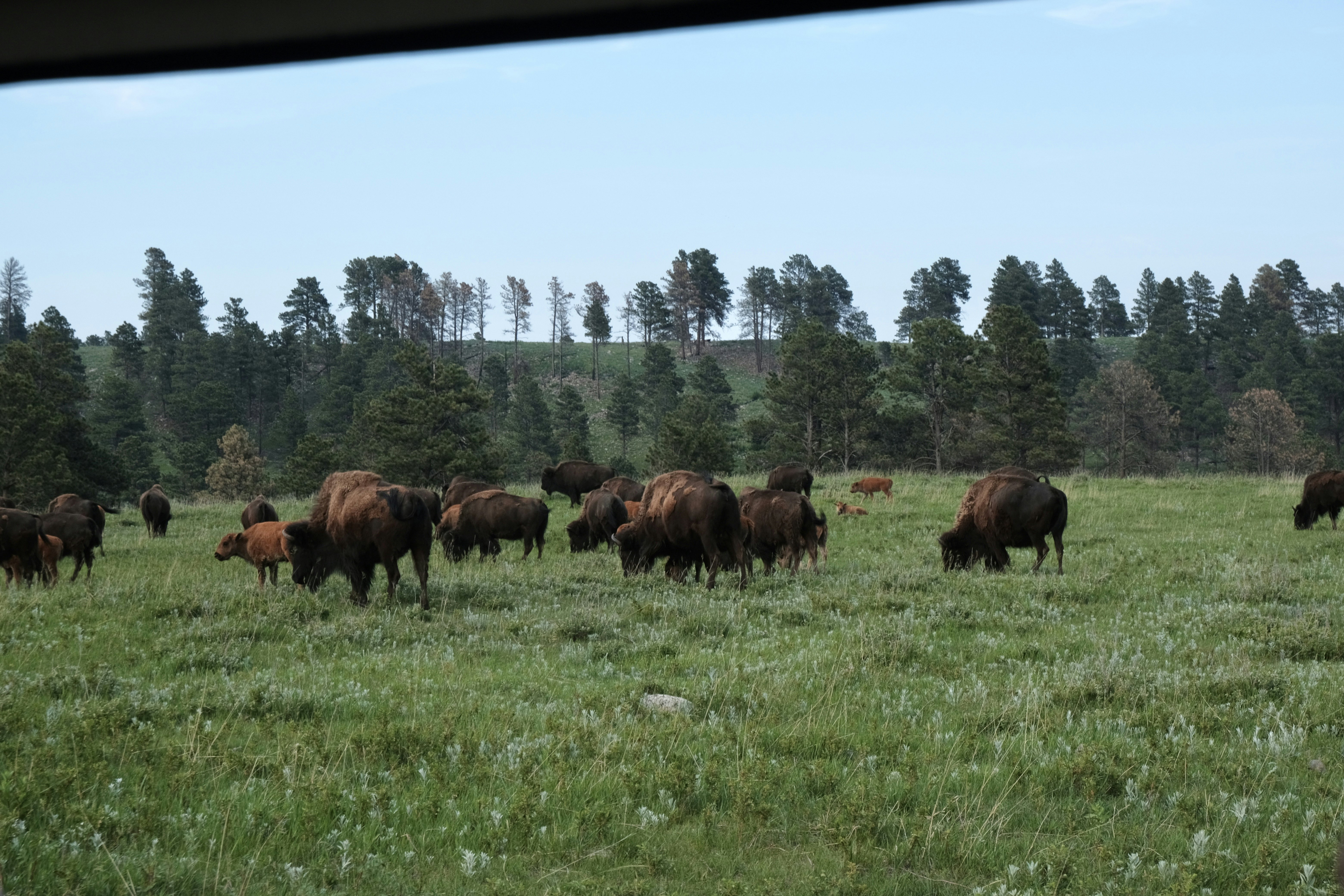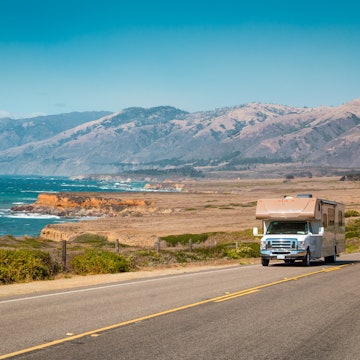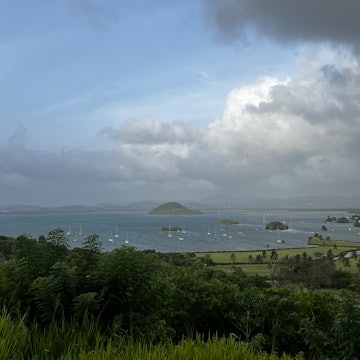

Badlands National Park in South Dakota. Mark Read for Lonely Planet
In South Dakota, sculpted rock formations rise from the earth, lakes shine like glass, and prairies grasp onto the horizon like endless oceans of grass.
The landscape is so astonishingly beautiful it feels like one big national park. This is the ancestral land of the Lakota and Dakota. Today, the state is home to nine tribal governments and more than 71,000 Native American people.
Visitors come to South Dakota for many reasons, but most are drawn to the spectacular natural beauty of places like Badlands National Park and the Black Hills, as well as human-made monuments like Mt Rushmore National Memorial and the Crazy Horse Memorial. South Dakota, however, is full of surprises. It doesn’t take long to discover that the state has far more to offer than its best-known attractions. South Dakota is a place where you can experience active paleontology sites, witness a thousand bison stampeding down a hill and explore some of the longest caves in the world.
Plan your visit with this guide for first-time visitors.

When should I go to South Dakota?
There are places where the seasons come and go without fanfare – South Dakota is not one of them. Each season brings different weather, scenery and new reasons to visit. Winters in South Dakota are snowy and cold with average temperatures falling from 32°F to 10°F. It’s a great time for snowy pursuits like skiing, snowmobiling and ice fishing.
Although higher elevations still receive snow, spring brings warmer weather and average temperatures of 50°F to 60°F for most of South Dakota. Wildflowers bloom, baby animals are born, and you can generally expect to see some rain.
Summer sees average highs around 90°F and 15 to 16 hours of sunlight a day. This is the most popular time to visit South Dakota, so expect crowds at popular sites like Mt Rushmore National Memorial.
In autumn, the leaves change, and places like Spearfish Canyon Nature Area explode with color. Temperatures fall to somewhere around 44°F to 57°F, with warmer weather in the weeks following Labor Day. Early fall is an excellent time to visit South Dakota since the weather is pleasant, yet most summer tourists are gone.
How much time should I spend in South Dakota?
We recommend dedicating five to seven days to your trip to South Dakota. If you only have three or four days, concentrate on Badlands National Park and the Black Hills, with attractions like Mt Rushmore, the Crazy Horse Memorial and Custer State Park.
Is it easy to get in and around South Dakota?
The two largest airports in South Dakota are Sioux Falls Regional Airport and Rapid City Regional Airport. If you plan to limit your visit to Badlands National Park and the Black Hills, fly into Rapid City. To take in sites like Falls Park in South Dakota’s largest city, fly into Sioux Falls.
South Dakota is vast, and public transportation is limited, so it’s easiest to get around by car. This allows you to set your own schedule and linger in the places that interest you the most. If you prefer to leave the driving to someone else, companies like Black Hills Vacations offer scenic drives and guided tours to major attractions, national parks and monuments.

Top things to do in South Dakota
Spend the day at Mt Rushmore and the Crazy Horse Memorial
Mt Rushmore National Memorial and the Crazy Horse Memorial are only 20 minutes apart, so you can easily visit both on the same day. Set aside three to four hours to explore the grounds and exhibits at each. Mt Rushmore famously features 60ft-tall likenesses of four US presidents. The Crazy Horse Memorial has been in progress since 1943 and already dwarfs Mt Rushmore in comparison. It will be 641ft long and 563ft high when it’s completed.
Explore ancient caves
You’ll find more than 28,000 acres of grasslands, forests, wildlife and hiking trails at Wind Cave National Park. The real attraction, however, is one of the world’s largest underground cave systems. Thus far, more than 150 miles of the cave’s labyrinthine passages have been surveyed. The park offers guided tours for a nominal fee, including an adaptive tour for visitors with special needs.
Jewel Cave National Monument is about a half-hour drive from Wind Cave National Park. Believe it or not, it’s significantly larger than Wind Cave with more than 220 surveyed miles. Be sure to take one of the guided tours to glimpse the sparkling calcite crystals that give the cave its name. Fun fact: neither Wind Cave nor Jewel Cave has been surveyed entirely yet, and many believe they may actually connect.

Take a scenic drive through a national park
Hwy 240 Badlands Loop Rd travels past prairies, surreal rock formations and some of the best vistas in Badlands National Park. You can drive it an hour, but why rush when there are viewpoints, wheelchair-accessible boardwalks and wildlife – such as big horn sheep, pronghorn and bison – along the way?
Afterward, make a pit stop at Wall Drug, home of free ice water and 5-cent cups of coffee. What started as a mere pharmacy in 1931 is now a huge entertainment complex with a 500-seat restaurant, bookstore, multiple gift shops and animatronic dinosaurs. And yes, you can also fill your prescriptions.
Watch paleontologists dig for mammoth bones
In 1974, mammoth tusks were discovered during a construction project in the Black Hills. Work was halted so the site could be preserved. So far, the remains of more than 60 mammoths and 87 other Ice Age creatures have been uncovered. The ongoing work takes place underneath a building erected to protect the find. A visit to the Mammoth Site is a rare opportunity to engage with working paleontologists as they sift through prehistory.

Pay your respects at the graves of Calamity Jane and Wild Bill Hickcock in Deadwood
Even if you weren’t a fan of the eponymous HBO series, the town of Deadwood is a delightful blend of kitsch and authenticity with casinos, souvenir shops, old-time saloons and museums housed inside historic buildings. After a few hours of moseying the sidewalks, head up the hill to Mt Moriah Cemetery, the final resting place of legendary figures like Calamity Jane, Wild Bill Hickcock and Seth Bullock. Wear comfortable shoes – it’s steep terrain, and Sheriff Bullock’s headstone is at the top.
Walk along a winter wonderland in Sioux Falls
Watching 100ft of water rushing down the falls inside the lush, 128-acre Falls Park is stunning any time of year. This is never more true than in winter when more than 355,000 lights, 270 trees, 275 light poles and 25 miles of light strings twinkle and glow. Don’t miss it if you’re anywhere near Sioux Falls during the holiday season.
Drive the Native American National and State Scenic Byway
South Dakota’s Native American National and State Scenic Byway winds through the lands of the Standing Rock Sioux, Cheyenne River, Lower Brule, Crow Creek and Yankton nations. The scenery is beautiful as you pass over the Missouri River and travel across prairies, past undulating hills and beneath dramatic cliffs.
Highlights along the way include the Dakota Territory Museum and the awe-inspiring 50ft-tall Dignity of Earth & Sky sculpture by artist Dale Claude Lamphere, which stands on a bluff above the Missouri River. The South Dakota section of this road trip stretches 100 miles, and the drive can be extended into North Dakota.
Try the local delicacy
Keep your eyes peeled for chislic on local menus. This traditional South Dakota dish consists of tender cubes of skewered lamb or beef, deep-fried or grilled, topped with garlic salt. Chislic is usually served as an appetizer with saltine crackers and dipping sauce on the side.

My favorite thing to do in South Dakota
I’m a huge national park geek, but my favorite park is not a national park at all – it’s Custer State Park. Prepare to say a lot of oohs and aahs as you explore 71,000 of the most breathtaking acres in the nation. More than a thousand bison roam the prairies along with elk, mountain goats, pronghorn and burros. Tall bluffs and slender granite pinnacles make a stunning backdrop for hikes and scenic drives. Don’t leave without visiting Sylvan Lake, where smooth rock formations reflect on the water’s mirror-like surface.
Every year on the last Friday of September, the ground tremors and clouds of dust fly into the air as 1400 bison thunder downhill at Custer State Park. This is annual the Buffalo Roundup, when mounted cowpokes funnel the bison into corrals for herd management. The public lines up before the gates open to find spots on the hillside to take in the spectacle. It’s an unforgettable experience, encapsulating the wild spirit of the American West.
How much money do I need for a trip to South Dakota?
South Dakota skews affordable since most top attractions are on public land. If you don’t have one already, an America the Beautiful Pass is worth the modest investment since it will grant you entrance to South Dakota’s national park sites and public lands throughout the country.
Basic room for two: $100 to $250 per night
Camping: $15 to $55 a night
America the Beautiful Pass: free to $80 a year
A stiff drink in an old-time saloon: $8 and up
Dinner for two: $75
Order of chislic: $15
















